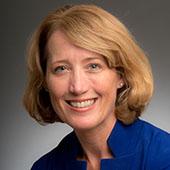My new report with George Ingram “Global Development Disrupted: Findings from a survey of 93 leaders” points to a world dividing in two and the challenge of addressing two very different types of development needs at once. This two-tier world presents a host of challenges to development organizations. Our survey found a wide range of innovations and adaptations—and expectations of even more change going forward.
On the one hand, development leaders see fragile states characterized by stagnant or declining growth, protracted conflict and poverty, endemic corruption, weak governance, and (often) the large-scale movement of people. These circumstances are relatively few in number, as other countries experience growth and rising middle classes, but they present complex and interwoven challenges that are extremely difficult to address. Humanitarian relief is the most urgent immediate need in these environments. However, leaders we interviewed also called for more focus on long-term development in areas such as governance, health, education, and economic livelihoods as well as more immediate humanitarian relief. Otherwise, the cycle of fragility is never broken. The challenge is to adapt development to these environments and achieve tangible outcomes, even if they are small and cumulative over time.
On the other hand, development leaders see many more countries that are growing and many that are lifting themselves out of poverty. They have growing middle classes, increasingly capable domestic institutions, pluralistic governance, and a rising private sector. They also face development challenges: pockets of significant poverty, substantial economic and social inequalities, youthful populations with inadequate opportunities, and marginalized groups. They need higher levels of investment, infrastructure, education, a functioning justice system, and social inclusion.
The development leaders we interviewed are working in both types of environments but increasingly see them diverging, with consequences for both global development and their own organizations.
With respect to global development, there is excitement that new financing mechanisms such as social impact investing, development finance through new mechanisms like the US International Development Finance Corporation created by the BUILD Act, will unlock and leverage vast private investment. Because private investors often avoid the riskiest investment climates, this new capital will likely accelerate growth in the second group of countries far more than the first.
There is also excitement around the emergence of much more capable local actors: governments at the national, regional, and local levels; civil society organizations; and private businesses. At the same time, the talent pool of educated, experienced professionals is growing in developing and middle-income countries. This is a major resource for these societies and is fueling a trend toward localization in global development. Again, this talent pool is concentrated more in the second group of countries than the first as more opportunities are available domestically and some diaspora populations start to return home.
This two-tiered world has consequences not just for the people who must live in these countries but also for international development organizations, particularly private sector development contractors and NGOs. Mission-driven organizations are pleased to see the positive trends in the second group of countries. But they are also grappling to see how they add value in a much more competitive environment, with many capable and often lower cost-organizations present locally, and new ways of financing development work that may require new skill sets and approaches.
They also struggle with the dangers and frustrations of working in the first group of countries. The safety and security of partners and staff is a major concern. It is hard to achieve and show impact at a time when donors are (rightfully) focused on measuring results. Funding is short-term but it is hard to achieve progress in such difficult environments. It is understandably expensive to operate in these environments and organizations need to be able to operate at scale and maintain high levels of capabilities to be effective—all of which is expensive. Development organizations must figure out how to make a meaningful difference, do so safely and ethically, show impact, and maintain efficiency.
Development organizations are innovating in response. Many organizations are investing in the more robust collection and analysis of data, to help them be more adaptable and impactful. Others are putting extraordinary effort into getting feedback from beneficiaries in real time, even in fragile environments. Some organizations are hedging their bets, creating families of organizations with different cost structures and staffs. Some are leaning hard into localization, acquiring local partners at a rapid pace while slimming down their headquarters in the West. Some are forecasting consolidation in the development sector—including mergers, acquisitions, and some organizations going under. Some expect more and more local organizations to rise up and eclipse international actors.
The challenge is driving innovation and experimentation across the development sector. And hopefully, populations around the world—in both types of countries—will be the main beneficiaries.
The Brookings Institution is committed to quality, independence, and impact.
We are supported by a diverse array of funders. In line with our values and policies, each Brookings publication represents the sole views of its author(s).







Commentary
Adapting global development in a two-tiered world
April 4, 2019